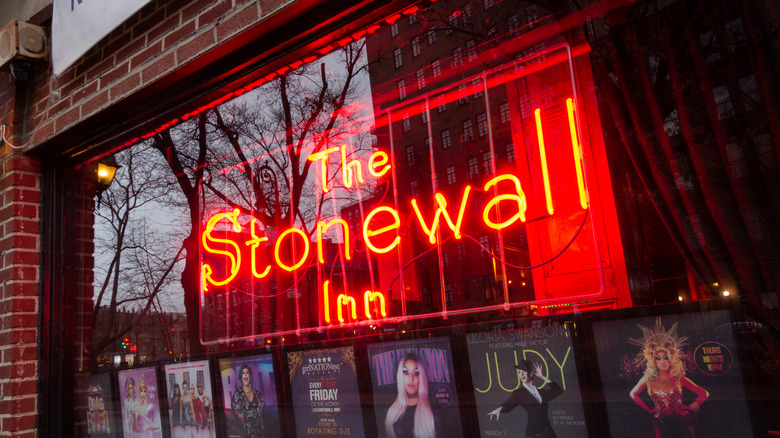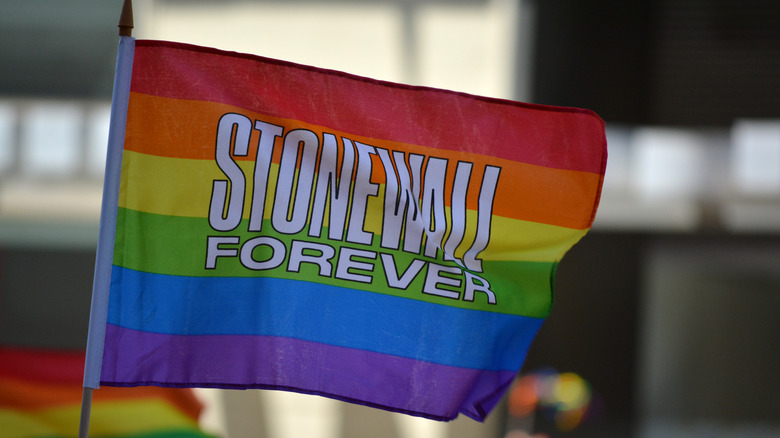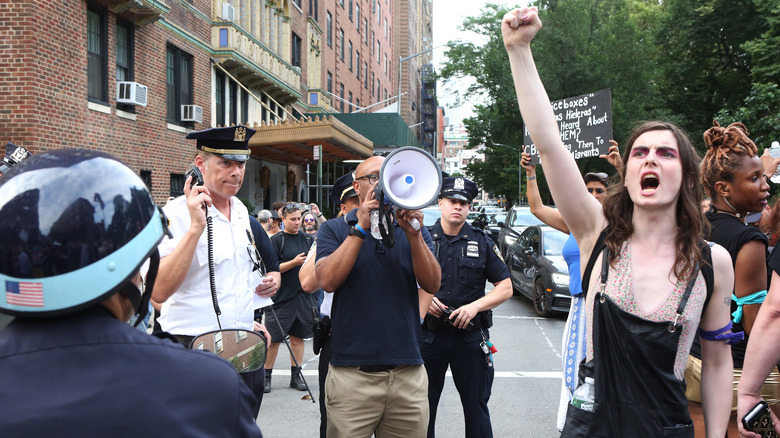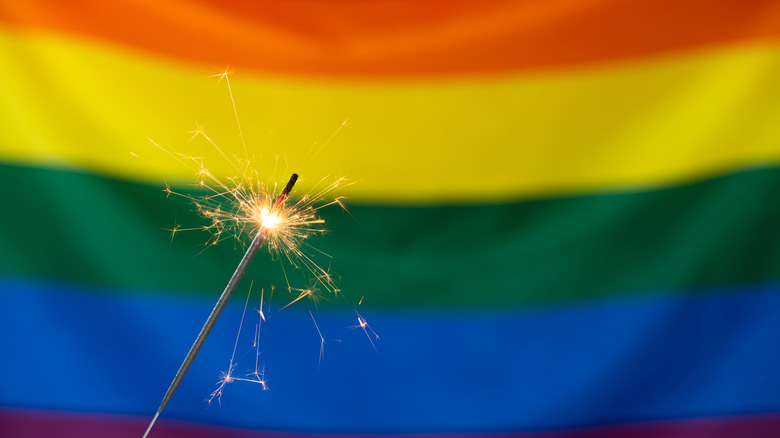Who Exactly Started The Stonewall Riots
The Stonewall Riots, also known as the Stonewall Uprising, were a monumental turning point in the ongoing struggle for LGBTQ+ rights both in the United States and abroad. Starting on June 28, 1969, and continuing for nearly a week, the queer folk of New York had decided they'd had enough poor treatment from the state, the civil populace, and the police, so they took to the streets to make themselves seen and heard in a way that couldn't simply be brushed under the rug of an antiquated sense of decency. The uprising, as those who understand the value of riots tend to call the time period, comprised of a mix of tactics from nonviolent kick lines performed by people in drag and more intense forms of protest that Mental Floss says had police barricaded inside the Stonewall Inn on the first night. Though the details of the Stonewall Riots might not be known by everyone, most people know the riots took place, but does anybody know who started the whole thing?
The "whodunnit first" has been a mystery since that early June morning when it all popped off. Even those who participated on the first night of the uprising can't seem to agree on who actually threw the first stone, or more iconically, the first brick that set Greenwich Village ablaze with the anger of thousands of ostracized LGBTQ+ voices. That being said, there are a few different accounts about who started the incident, and even those are conflicting.
Some say it was the patrons
The Stonewall Riots had two sides: The patrons and LGBTQ+ folk who were gathered at the Stonewall Inn when it was raided that fateful morning and those who opposed them, mainly the police. Some sources, like The Guardian, say the riots kicked off because the patrons of the Stonewall Inn, who were attempting to enjoy a night at one of the few safe(ish) places for queer people in New York, many of whom received citations or warnings for wearing gender inappropriate clothing, were taunting police officers. But here's the thing: It's not illegal to taunt cops. You can call them names, talk smack, or be annoying all you want as long as you aren't openly obstructing their operation. According to HR.org, that sort of thing is protected by the First Amendment. Unless the taunts push into the realm of harassment, those officers are supposed to deal with it as any other adult would.
The primary story saying the bar-goers were at fault goes something like this: An unnamed lesbian woman was being shoved into a police car, where she fought like crazy and riled up the onlookers. The crowd then started rioting, and the woman escaped, from which point her identity would be lost to history's missing pages. We don't know whether that story is true or not, but there definitely seems to be another side to it.
Others say it was the police
In the case of the woman lost to history (the idea), History (the publication) has what seems to be an important piece of the story that's often overlooked. The cops weren't exactly soft and cuddly when they raided the Stonewall Inn that morning. In what some would claim is tradition among police raids, they were pretty "rough" on the patrons, reportedly whacking the unnamed woman over the head before shoving her into the vehicle. The crowd, having seen more than enough abuse for one night and having heard the woman's pleas for help, took action. They'd reportedly been gathering since the raid began, growing increasingly agitated as the events unfolded, and now they were purportedly belting pocket change at the raiding officers. Soon, coins would become bricks and the agitated crowd would become a riot.
You could say the police raid set the stage for the riot since it was the first action in the chain of events, but raids happened all the time, while riots didn't. You could likewise say the police started the riot when they reportedly hit the woman over the head or that the crowd started the uprising by supposedly belting change at the officers, and within the confines of that one night, that very well could be true. But the societal elements that spurred this uprising were much deeper and much older than the events of a single night.
It seems to have been a mix of factors
What's more important than who started the Stonewall Riots is the mix of factors that led to the breakout of this particular uprising, and New York at the time was a powder keg with a smoldering fuse. It wasn't illegal to be gay — an all encompassing term used for LGBTQ+ people back then — in the state, as The Guardian notes, but the police didn't make it easy either. A person was required to wear three pieces of "gender appropriate" clothing, according to Time, and same-sex couples couldn't display any physical affection in public. This includes the miniscule act of holding hands. Basically, LGBTQ+ folks weren't allowed to be themselves unless it was behind closed doors, and if they tried in public, they'd be cited or arrested.
Gay bars at the time weren't much better. The state often refused them liquor licenses, claiming they were "disorderly" businesses, so the ones that did operate, did so illegally. This seemingly gave the police ample authority to raid the joints whenever they saw fit. Harassment by the cops was an everyday occurrence, as was violence. Mix that with the progressive nature of a time when human rights struggles were fully underway, and you end up with a fueled atmosphere one false step from ignition. The raid on June 28, 1969, was nothing more than the match lighting a long-awaited, transformative fire that would forever change the social landscape for LGBTQ+ people.



